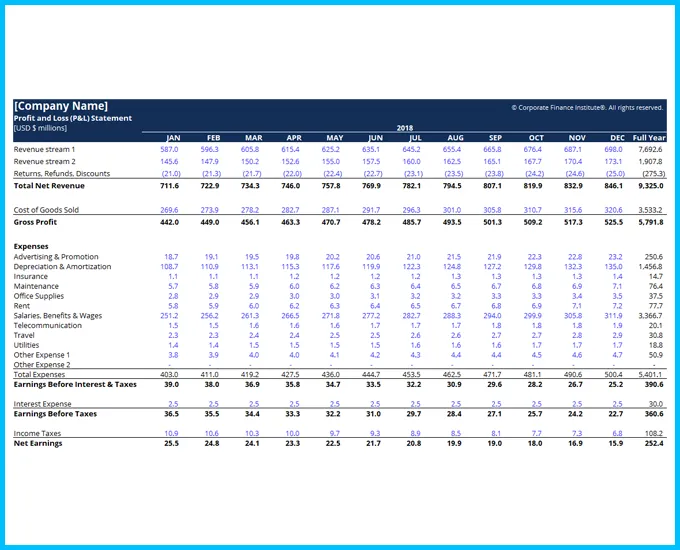
A profit and loss statement (P&L), or income statement or statement of operations, is a financial report that provides a summary of a company’s revenues, expenses, and profits/losses over a given period of time. The P&L statement shows a company’s ability to generate sales, manage expenses, and create profits. It is prepared based on accounting principles that include revenue recognition, matching, and accruals, which makes it different from the cash flow statement.
A company’s statement of profit and loss is portrayed over a period of time, typically a month, quarter, or fiscal year.
The main categories that can be found on the P&L include:
.̣Looking at the above example, we see that Amazon posted a profit of $596 million in 2015, a profit of $2.4 billion in 2016, and a profit of $3.0 billion in 2017.
Amazon breaks down its total revenue into product sales and service sales. Its operating expenses consist of cost of sales, fulfillment, marketing, technology, G&A, and others. At this point, it provides a subtotal on the statement for Operating Income, also commonly referred to as Earnings Before Interest and Taxes (EBIT).
Below that, interest expense and taxes are deducted to finally arrive at the net profit or loss for the period. To learn more, read Amazon’s annual report.
Credits to : Corporate Finance Institute